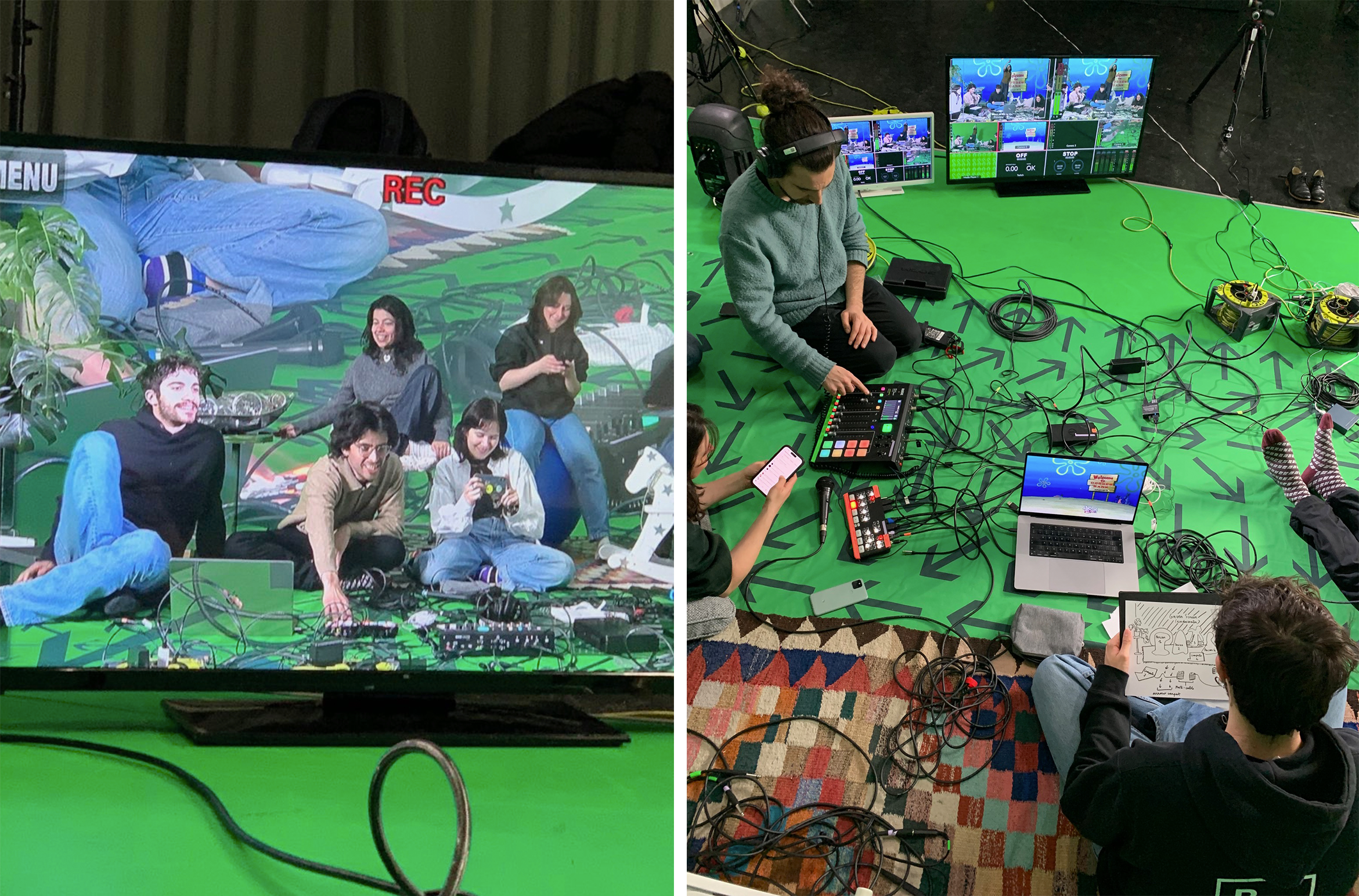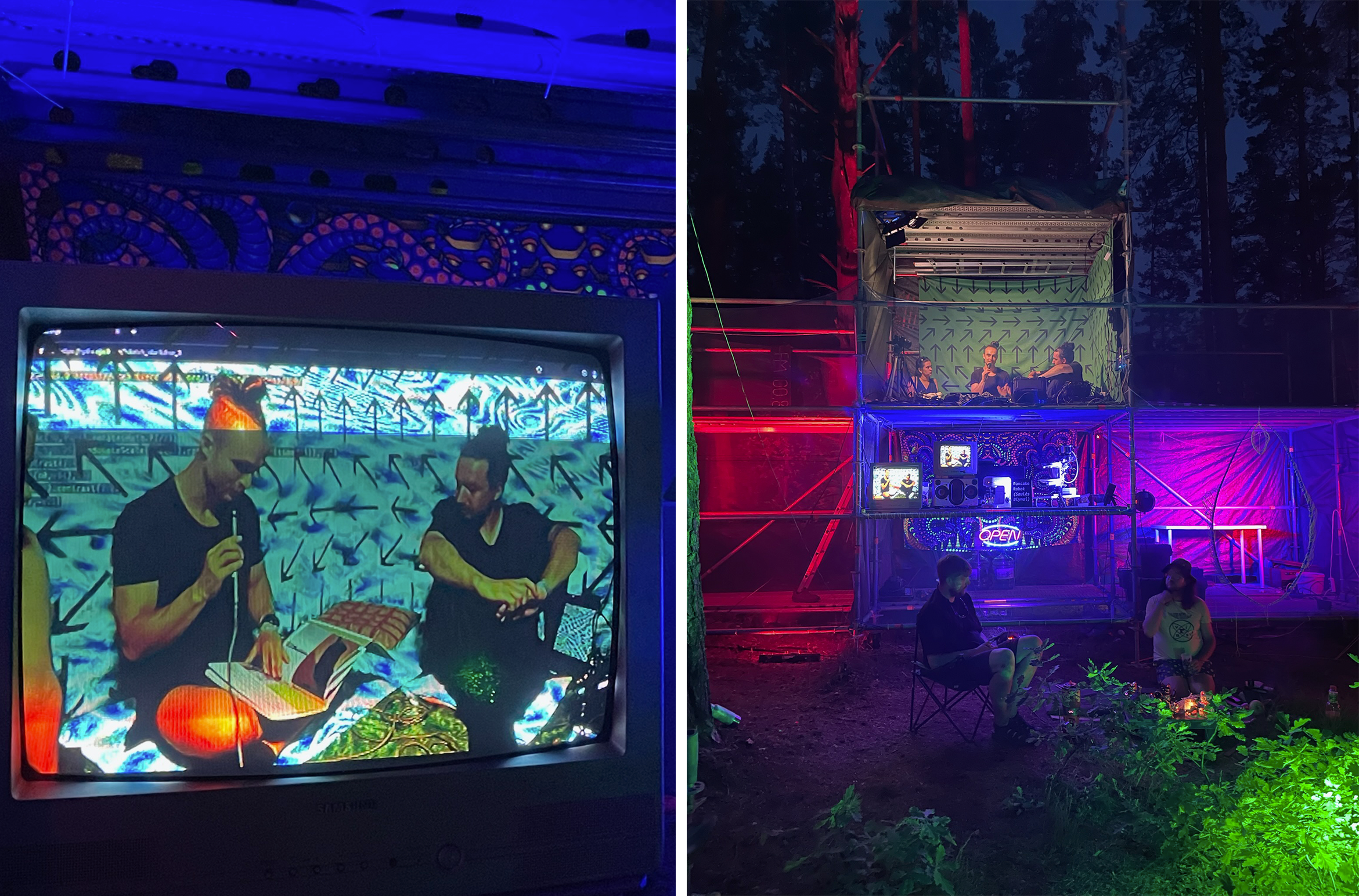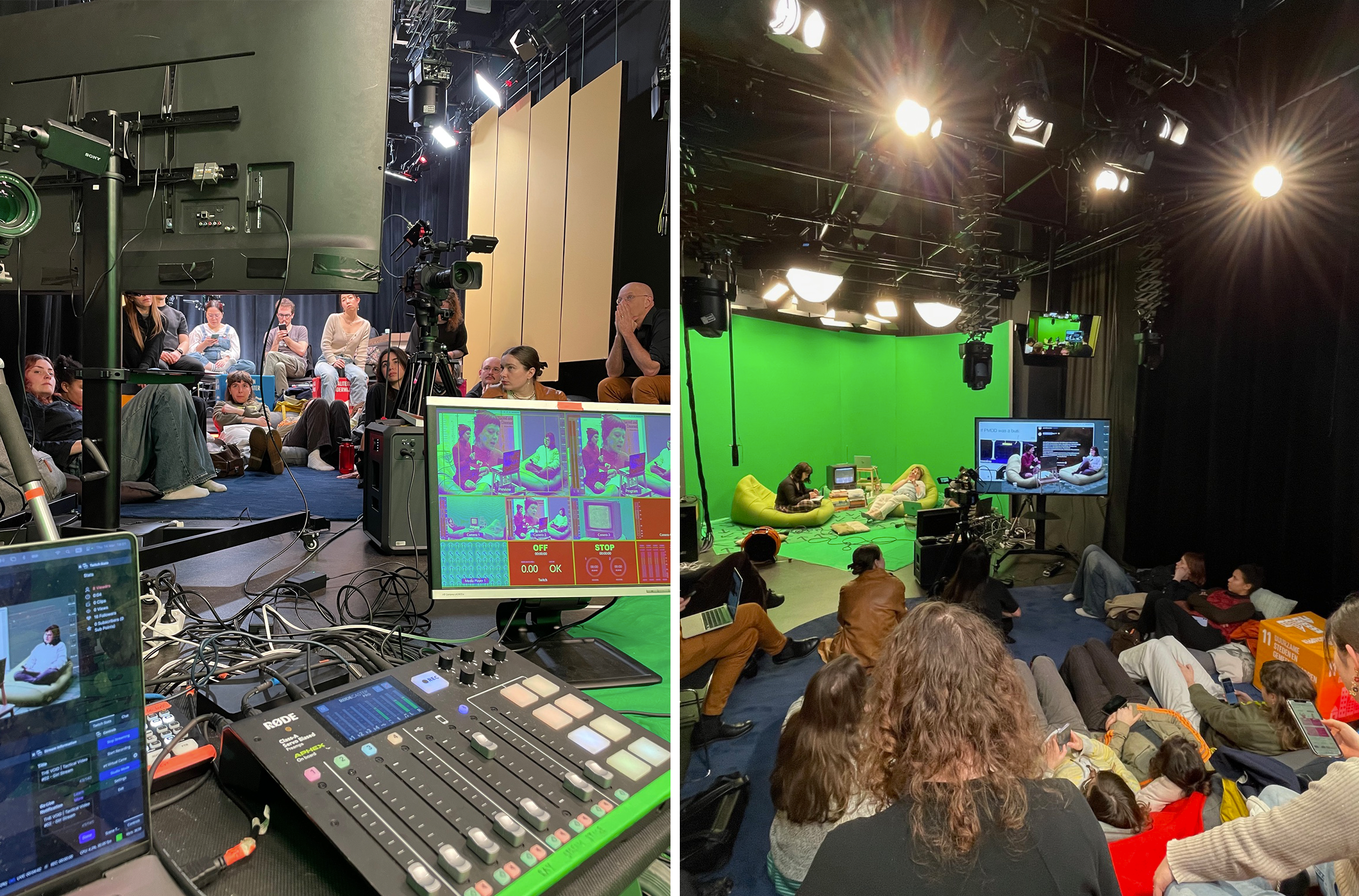This is the first blog post of a multi-part series making sense of THE VOID’s online video practices in the context of cybernetic participatory culture, the legacies of tactical media, stagnating platformization, encroaching AI, and the nascent Stream Art Studio Network.
🟢 🟢 🟢 It’s not that complicated. It’s all a matter of inputs and outputs. What comes in and what comes out. THE VOID’s pop-up studios do not require a great amount of expertise. If you’ve ever connected an HDMI cable to your TV, you pretty much have the basics covered. And yet, it quickly gets messy.
Enlarge

Our setup normally consists of three to four video inputs (two cameras, two computers) and four audio inputs (two microphones and two computers – one for the performers on stage and one for music playback). Each of these signals are sent through their own dedicated cables, processed, in some cases converted from analogue to digital signal, to finally be composited either with a Blackmagic ATEM Mini or OBS Studio running on yet another laptop. We then stream this unified output on Twitch. Our devices are connected to the network of a Dutch educational institution. Our signal, hosted and streamed on late-stage-capitalism platformized servers. All this happens on a physical stage, sometimes improvised and built ad-hoc for the occasion inside classrooms, hallways of institutional archives, cinemas in former squats, and more recently in make-shift structures in the Lithuanian forest. Nevertheless, more often than not, the stage lives in the brand new (yet underused) TV studios of the Amsterdam University of Applied Sciences, itself located in a historic building of the city of Amsterdam. Regardless of its permanency, the studio is always wrapped in green screens, in between which all too IRL, shoeless, and sweaty people somewhat uncomfortably try to accommodate their bodies in a limited space.
Enlarge

We still try to make performers and audiences feel as comfortable as possible. While filled with professional equipment to the brim, the AUAS’s studio is far from cozy. We try to make up for this by covering the floor with pillows in a modest attempt to transform the space into a living room. We want our streams to feel like a laid-back house party. A PowerPoint night with friends but open to the public.
Enlarge

And yet, often our streams feel like a durational test. Lasting for at least 4 and up to 48 hours (yes, the connection fails at some point, so it is never an uninterrupted broadcast), they are (way too) packed with interviews, discussion tables, performances, video calls, and awkward introductions. On top of that, once the show ends the test is not yet over: the clock starts ticking and we become directors of a collective effort with performers and audience to clean up the borrowed studio before the Amsterdam University of Applied Science’s building closes. I wish to underscore the feeling of pressure in these moments — we’re all tired, too many cables are tangled, the audience helps but doesn’t really know how to best direct their efforts, performers expect some sort of closure, the AUAS’s security personnel rightly wants to go home as soon as possible... Bothersome and stressful, these moments however point out the institutional complexities and, more broadly, the social relations (personal, professional, institutional) surrounding our streams. We often think about how to include audiences more actively in our events without falling into the traps of performative and symbolic participation. That is, producing superficial, instrumentalized relations with them. Writing this, I can’t think of a more effective way of inclusion than this chaotic but common clean-up effort. Video cables go in an Ikea bag, audio cables in another one. Small adaptors live in cute little baggies. There’s a Rush Hour tote bag for the expensive 10-meter HDMI cables (clearly deserving the nicest home). The bulky stuff goes in our old suitcases, repurposed from moving our personal belongings from one precarious Amsterdam apartment to another. If after all this we’re still in the mood, we might grab a well-deserved beer. After the intensity of a live event, we then take our time to re-upload the Twitch stream on our Vimeo channel as shorter, stand-alone videos. These are later embedded in posts archiving the event on our WordPress website that, like the main INC website, is hosted on tuxic.nl servers. Cables. Mixers. Computers. Cameras. Servers. Public institutions. Private platforms. Shoeless feet. Suitcases. It quickly gets messy. Streaming and connecting cables are activities with way more practical and semantic implications than the apparently simple input-output dynamic. 🟢 🟢 🟢
Continue reading part two here.
